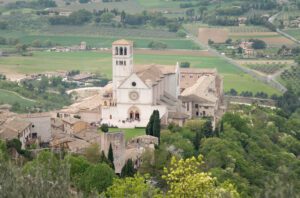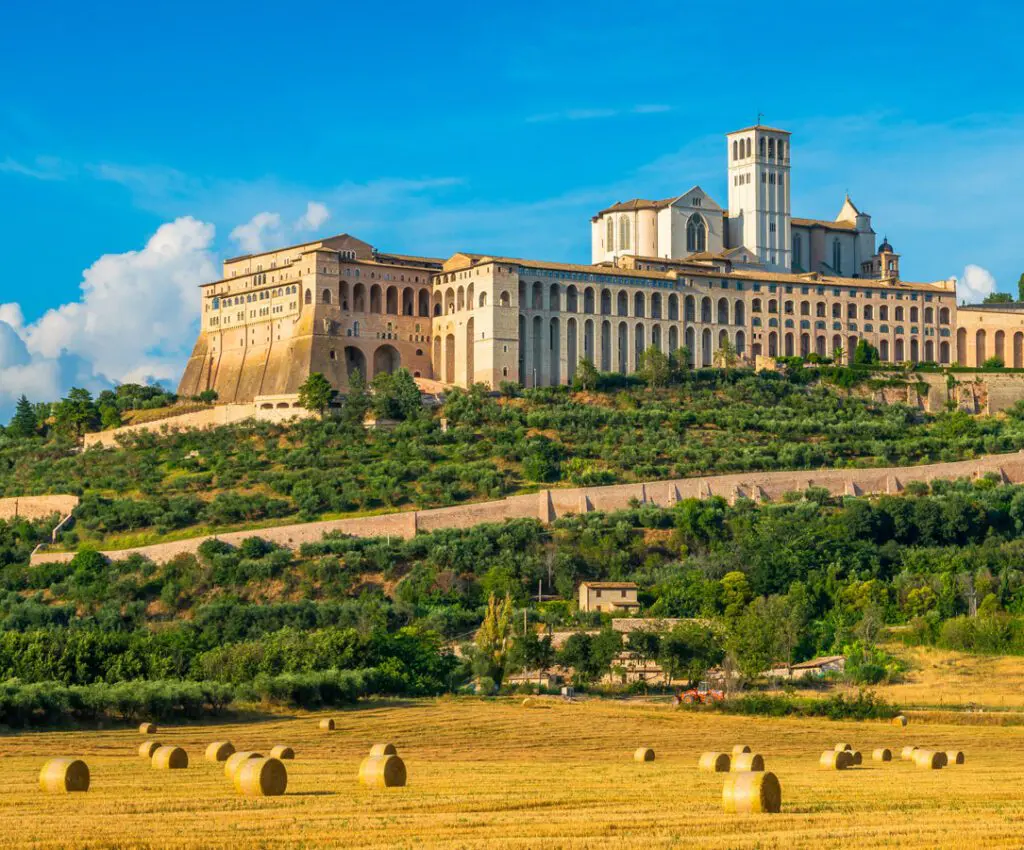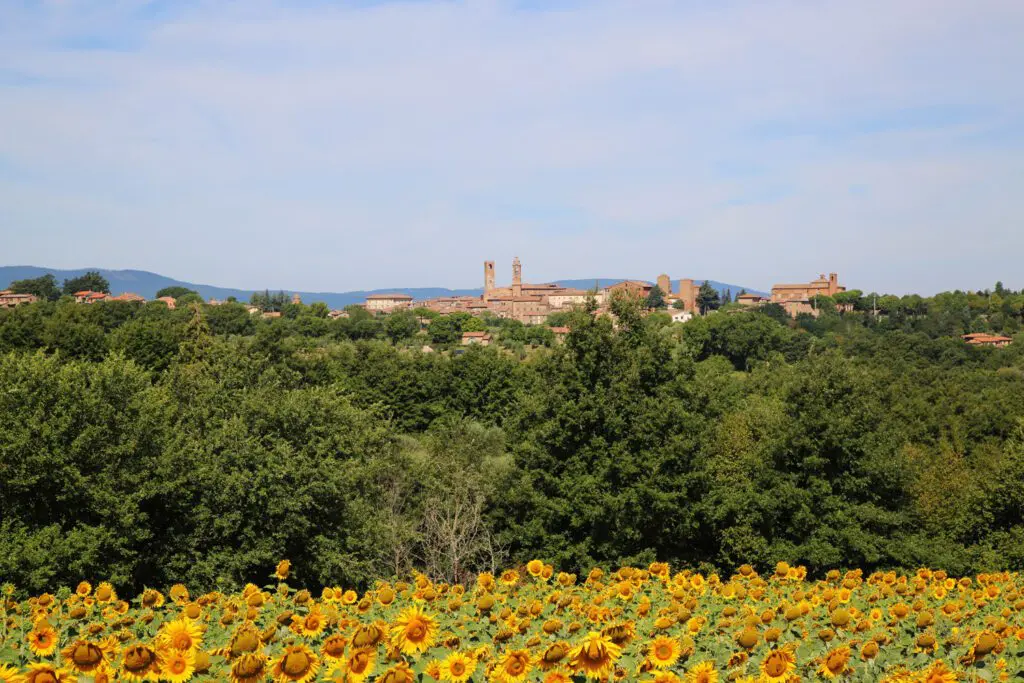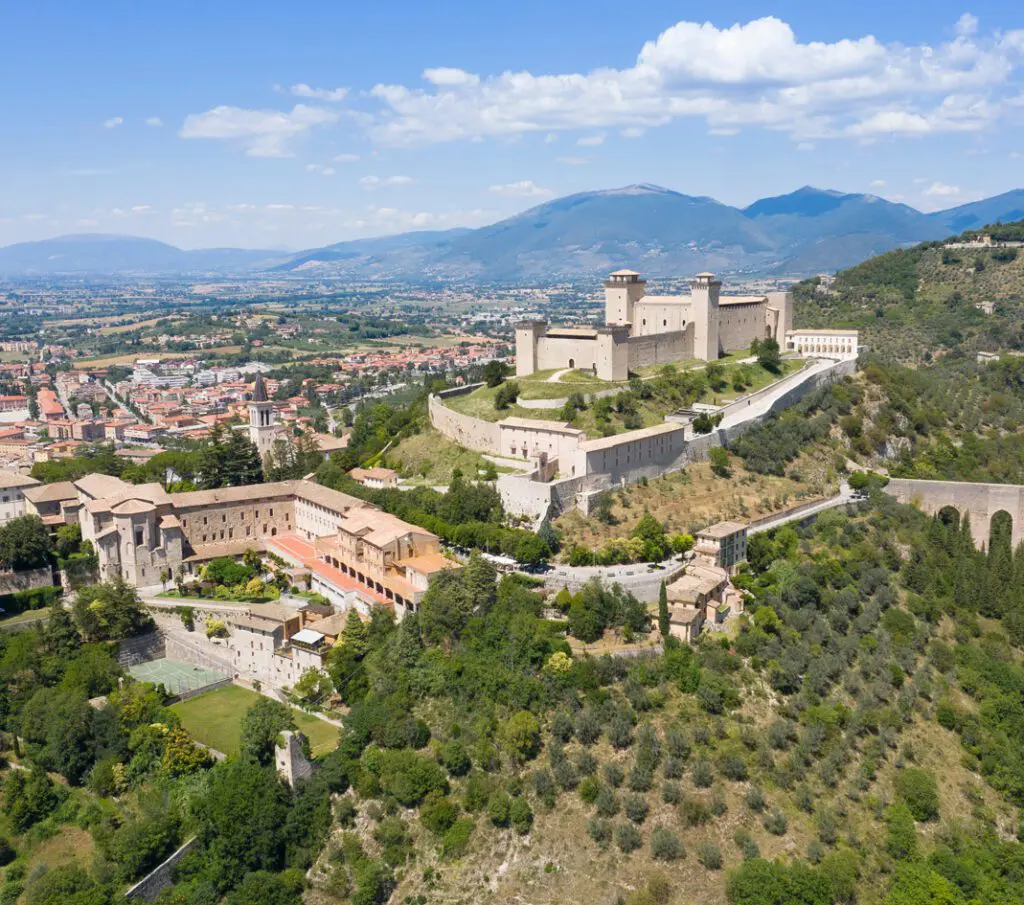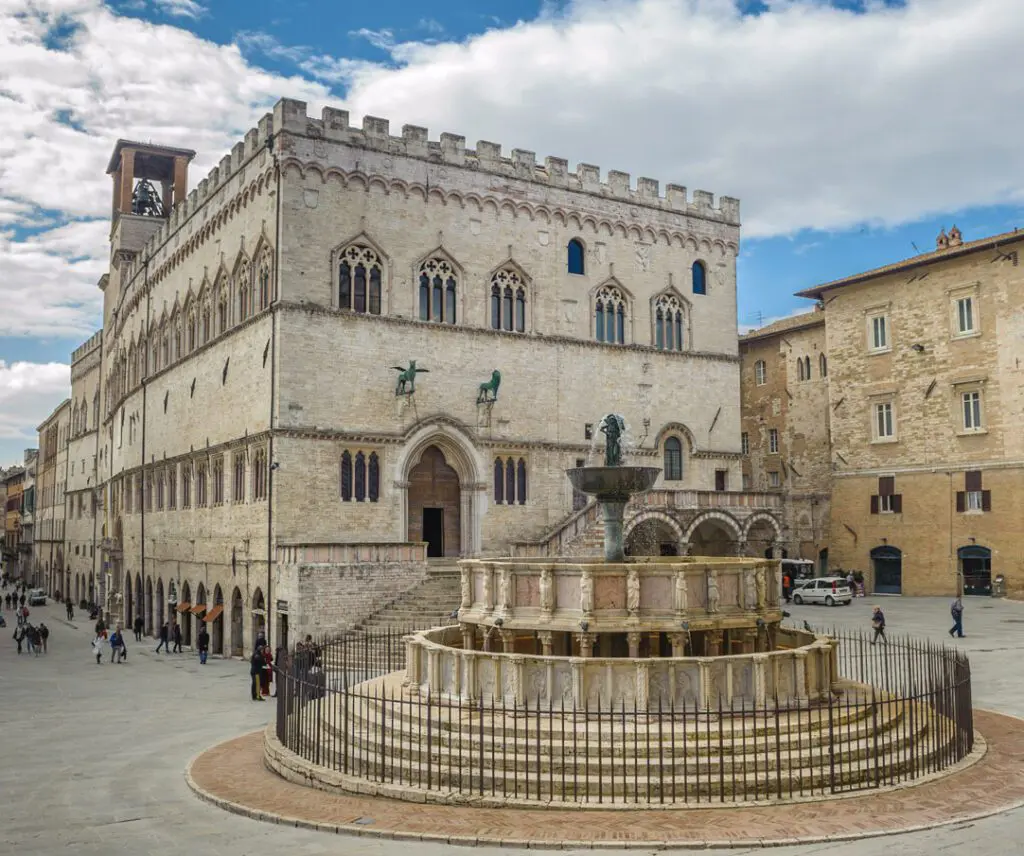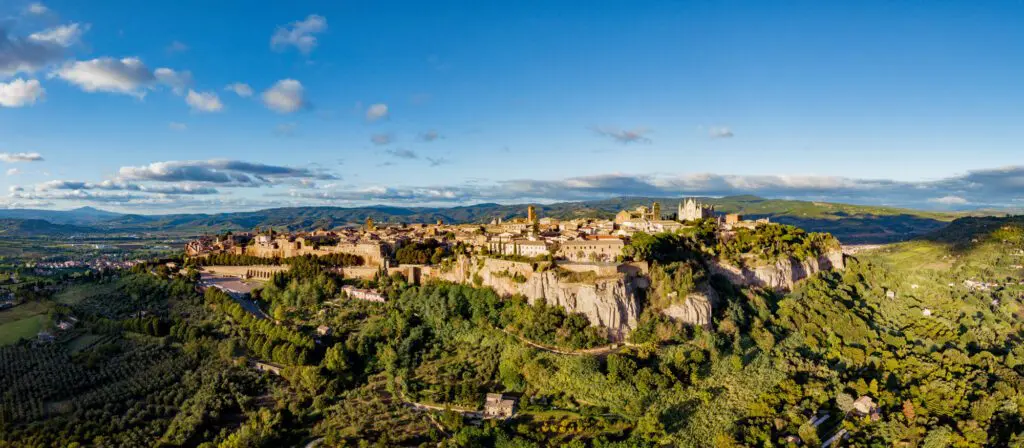The Perugia “Island”
Umbria is the only Region in Central-Southern Italy without a sea coast; so,it may seem bizarre to talk about an island if referring to Perugia. But, history provides a different meaning for the term: isola (island) is the current Italian equivalent to Medieval Latin insula, that also indicated a quarter, a neighborhood.
So, saying that Perugia owns such an island leads to recounting an essential part of the town’s history. It tells us about the architectural evolution of the old acropolis (the upper part) built on Colle del Sole, “Sun Hill,” the core of the old town center. The Saint Lawrence “Island” can be identified as the architectural complex of Saint Lawrence’s Cathedral and the adjoining buildings: the belfry, the Loggia of Braccio Fortebracci, the upper and the lower cloisters, the former houses of the Canons (Cathedral clergy), the former Seminary, the archaeological area and the Chapter Museum . All these structures can still nowadays be “circumnavigated” as they are enclosed within the town walls, that gives them their cultural identity. You may walk down Via Maestà delle Volte (a street under a vault, named after a Maestà, i.e. Virgin Mary enthroned) and, always keeping to the right, follow the contour of this sort of citadel – it will lead you back to the square on which the main gate of the Cathedral. opens. Not by chance, documents often mention this oldest town quarter as castello di San Lorenzo, too: the Saint Lawrence “castle.”
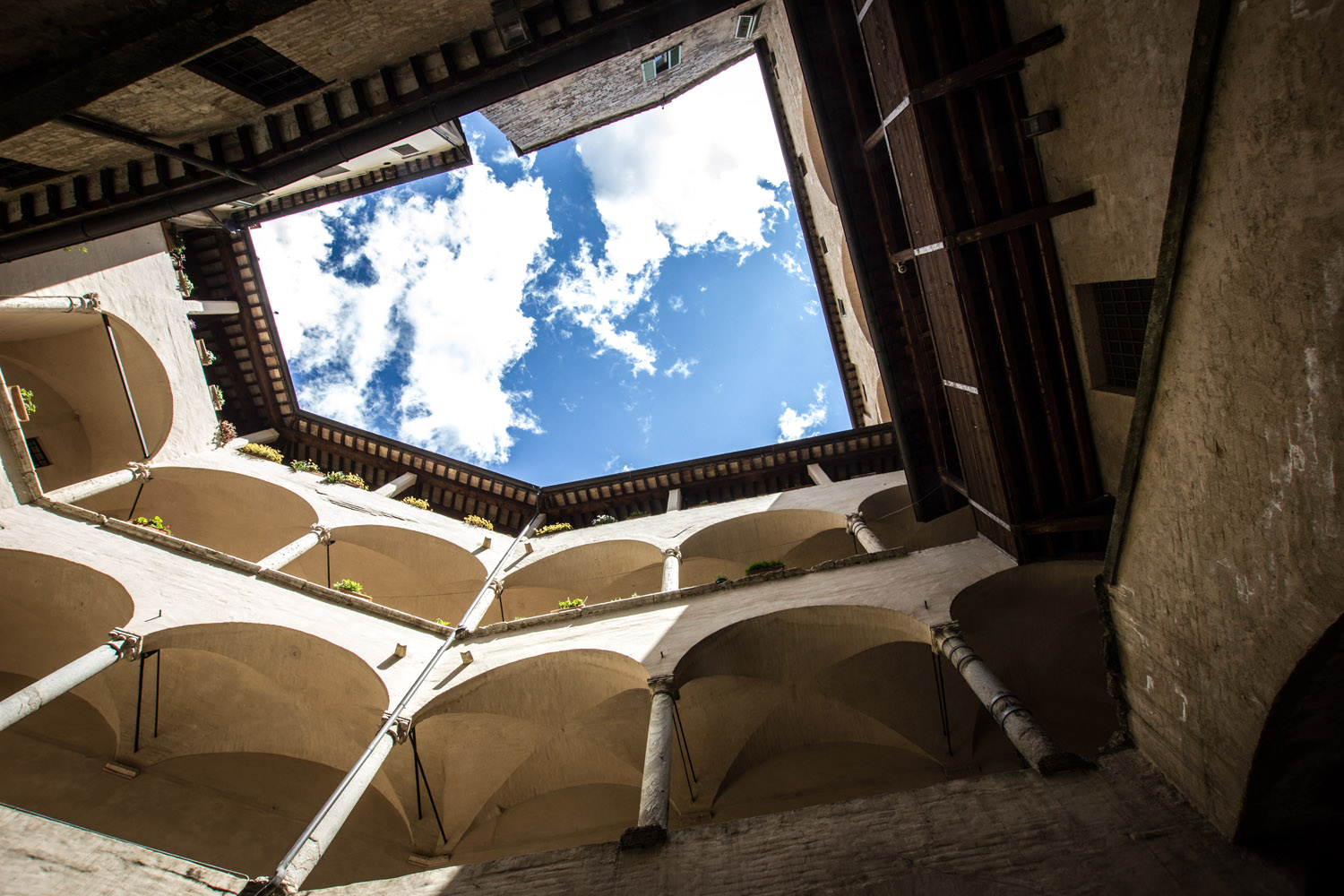
The Human and the Divine
The Saint Lawrence Island is named after the Saint to whom the Cathedral was dedicated from the beginning; and is one of the most ancient areas in the history of Perugia. We know for sure that, in the place corresponding to the modern apse, there existed an older cathedral, presumably of the 12th century, and possibly oriented perpendicularly to the current church. Scholars also suspect that a still older Christian building might have existed there, but the data presently available cannot give a clear answer. Archaeological excavations, however, did confirm that under the current cathedral lies a sacred Etruscan area. The first temple the Etruscans built was dedicated to a goddess called Uni, who can be identified with the Romans’ Juno.
This shows that the area was never abandoned, insofar as it had been chosen as a special place where human beings could ask the mystery of That which they perceived as “otherness.” The depth of this spiritual need – from the Etruscans onward – explains a continuity in the use of this site, for more than twenty-five centuries now.
It may be added that the Insula as the symbol of religious leadership has always been the pole opposite to the civil pole embodied in the Palace of Priors, the seat of the magistrature (the political leaders in the Medieval Commune).
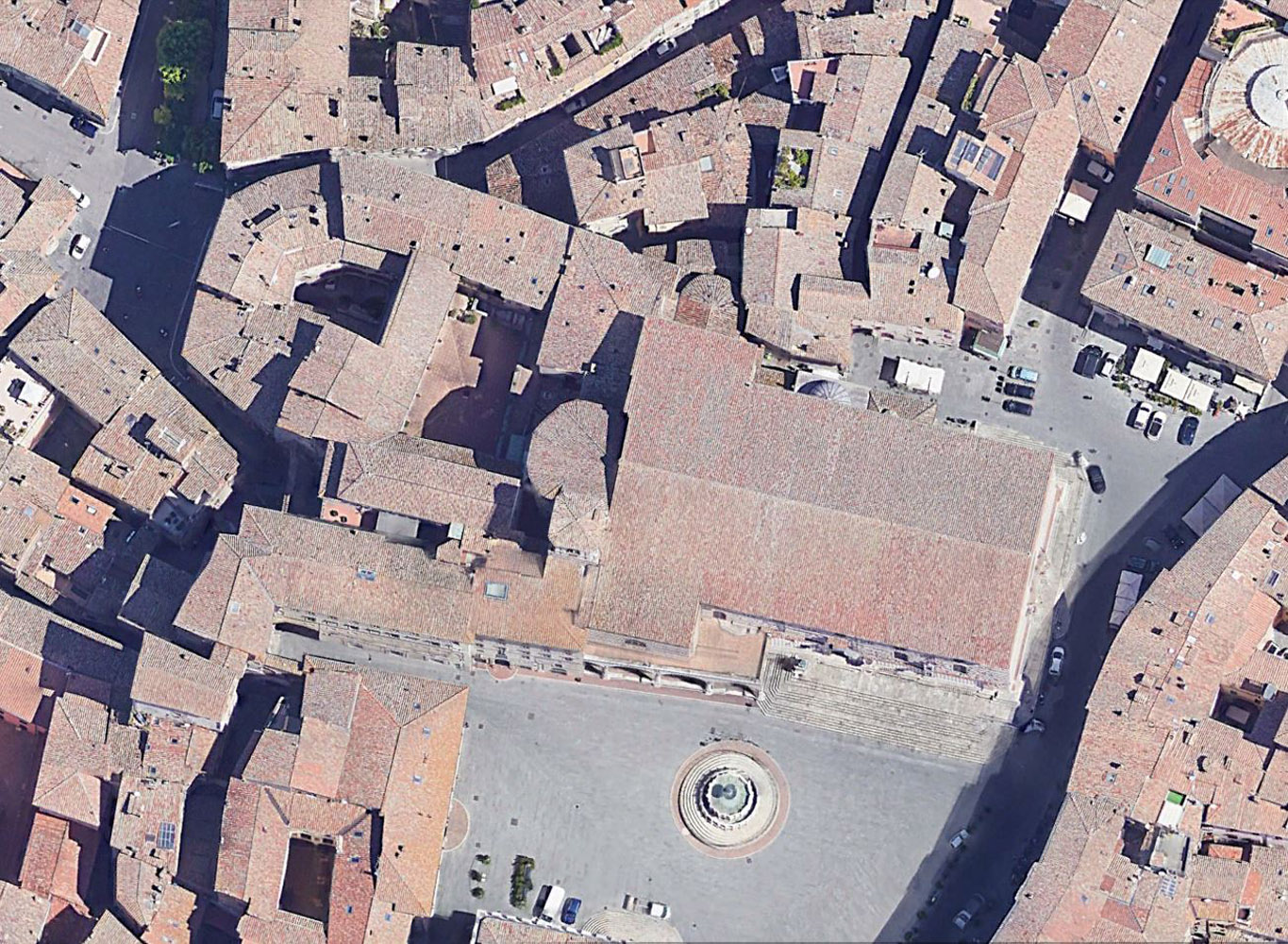
The Old Belfry in the “Island”
The belfry is another typical element of the Saint Lawrence Island. Under the Loggia (portico, arcade) di Braccio adjoining the cathedral – named after Braccio Fortebraccio, the Lord who had it built as the entry to his palace – the remaining part of the Medieval belfry can still be clearly seen: a wide polygonal base, incorporated in the wall. Recent research confirmed the existence of an older belfry, a cylindrical one, as shown in miniatures and paintings. We also know that the belfry was topped with a golden rooster.
Saint Lawrence Island – History Goes on
The history of the Saint Lawrence Island – with its archaeological area and the Chapter Museum – is unknown to most inhabitants of Umbria, and indeed, of Perugia. A history, a heritage that therefore must be regained to both the local people and the tourists who chose the charming goal of Umbria. Yes, to discover the Saint Lawrence Island means to reach the core of Perugia’s history – a truly exciting experience.


